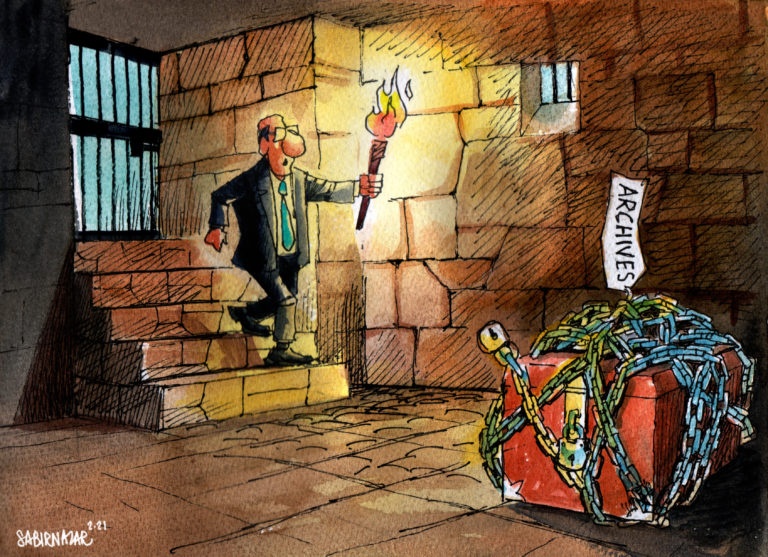
 Pakistan had its first General Elections in 1970 and the country failed to witness smooth transfer of power. The second general elections were held in March 1977 and the results were rejected on the charges of rigging by the incumbents. In 1985 the country had nonparty-based Elections. In May 1988 the dissolution syndrome struck the National and the provincial assemblies. The chief ministers in Punjab and Sindh switched sides and continued as the caretakers. However in the then NWFP General FazleHaq and in Balochistan Mir Zafarullah Khan Jamali became the caretaker chief ministers. There was no caretaker prime minister from May-December 1988.
Pakistan had its first General Elections in 1970 and the country failed to witness smooth transfer of power. The second general elections were held in March 1977 and the results were rejected on the charges of rigging by the incumbents. In 1985 the country had nonparty-based Elections. In May 1988 the dissolution syndrome struck the National and the provincial assemblies. The chief ministers in Punjab and Sindh switched sides and continued as the caretakers. However in the then NWFP General FazleHaq and in Balochistan Mir Zafarullah Khan Jamali became the caretaker chief ministers. There was no caretaker prime minister from May-December 1988.
The country reclaimed party-based democracy in December 1988. The caretaker chief ministers of Punjab (Nawaz Sharif) and Balochistan (Mir ZafarullahJamali) returned to power. However Mir ZafarullahJamali couldn’t garner the majority and was sent home by the court. Amid political chaos Justice KhudaBuxMarri assumed power as ‘caretaker’ during the age of a normal assembly till it elected the new chief minister. In 1990, the political opponents of the ousted Benazir Bhutto government were tipped as the caretakers, including Ghulam Mustafa Jatoi (prime Minister), incumbent Nawaz Sharif (CM Punjab), Jam Sadiq Ali (CM Sindh), Mir Afzal Khan (CM then NWFP) and Humayun Khan Marri (CM Balochistan). Out of these the caretaker CM Punjab became Prime Minister, the chief ministers of Sindh and then NWFP retained their positions after the election. However the CM Balochistan later became the senator and was elected deputy chairman Senate of Pakistan.
This tradition of the caretakers used to signal that the ousted ones have been sent home ‘not to return.’ In 1993 the Supreme Court nullified the caretaker prime minister Mir BalakhSherMazari and a few months later the country ‘imported’ its first caretaker prime minister, MoeenQuereshi from international financial institutions. However in the provinces Justice (R) Sh. ManzoorElahi (CM Punjab), Justice (R) Syed Ali Maddad Shah (CM Sindh), retired bureaucrat Mufti Muhammad Abbas (CM-then NWFP) and politician NaseerMengal (CM Balochistan) were trusted. None of these contested election 1993.
In 1996, once again the caretakers were the known political opponents of the ousted government including the former speaker Malik Miraj Khalid (caretaker PM), MianAfzal Hayat (CM Punjab), Mumtaz Bhutto (CM Sindh), Raja SikanderZaman (CM-then NWFP), and Mir ZafarullahJamali (CM Balochistan).
In 1999 the country once again plunged in to hybrid ‘civil-military regime.’ The maneuvered assemblies elected in 2002 completed their terms beneath president in uniform in 2007 and the then chairman Senate, Mian Muhammad Somroo was tipped as the caretaker prime minister. Justice Sh. EjazNisar (CM Punjab), Justice Abdul QadirHalepota (CM Sindh), former chairman WAPDA (Water and Power Authority) ShamsulMulk (CM then NWFP) and politician Muhammad SalehBhutani (CM Balochistan) were made the caretakers.
Upon the return of democracy in 2008, first time in countries history, the Parliament structured the institution of caretakers through the 18th and 20th Constitutional Amendments. The parliamentary design of the neutral caretakers was experienced in 2013 when Justice (R) Mir Hazar Khan Khoso (caretaker PM), journalist NajamSethi (CM Punjab), Justice (R) ZahidQurban Ali (CM Sindh), Justice (R) Tariq Pervez (CM-Khyber Pakhtunkhwa), and politician GhousBakhshBarozi (CM Balochistan) presided the first ever civilian to civilian transfer of power.
Following is the brief survey of the caretakers since 1988;
| Caretaker government of Zia ul-Haq and GhulamIshaq Khan
Duration: May 1988 –November 1988
|
General Zia-ulHaq dissolved the National Assembly and dismissed the government of Prime Minister Muhammad Khan Junejo invoking presidential powers under Article 58 (2) (b) of the Constitution. He appointed a caretaker government directly under him, without a caretaker prime minister, simultaneously holding offices of the President, Chief of the Army Staff and the chief executive. After Zia’s death in an air crash, the same cabinet continued under the Acting President GhulamIshaq Khan.
This caretaker government was by no means a neutral one, as its members where generally biased against Benazir Bhutto’s Pakistan People’s Party (PPP). The caretaker president, in cooperation with the military intelligence agencies, supported the formation of an electoral alliance of nine political parties – the IslamiJamhooriIttihad (IJI). The alliance was built to stop PPP from winning majority of seats in the elections. The IJI fielded joint candidates against PPP on almost all seats. In October 1988, the acting president made the casting of vote in election conditioned with production of the national identity card, attempting to disenfranchise PPP supporters. The Acting President also interfered in the delimitation process of the constituencies by issuing two Ordinances on the subject between July and September 1988 setting different yardsticks for different areas. The four provinces boundaries of the electoral constituencies were drawn on the basis of population census data of 1981, while the constituencies in Federally Administered Tribal Areas (FATA) were allocated on the basis of population census report of 1972. |
| Caretaker government of Ghulam Mustafa Jatoi
Duration: August 1990 – October 1990
|
After dissolution of the National Assembly and dismissal of Benazir Bhutto’s government on August 6, 1990, GhulamIshaq Khan announced fresh elections and appointed Ghulam Mustafa Jatoi as the Prime Minister.
Jatoi was chairman of the National Peoples Party and Leader of the Opposition (IJI) in the dissolved National Assembly. All caretaker ministers were also nominated on the basis of their political affiliation, all of them being from PPP’s rival parties. Three of them – GhulamHaiderWyne in the Punjab, Mir Afzal Khan in Khyber Pakhtunkhwa (then NWFP) and Jam Sadiq Ali in Sindh– held office as chief ministers after the elections. This caretaker government undertook different measures to damage its political rival PPP, filing several corruption and criminal cases against leaders of the party and diverting state resources through military intelligence agencies to support favorite politicians and candidates in their election campaigning. |
| Caretaker government of BalakhSherMazari
Duration: April 1993 – May 1993
|
Because of disagreements with his Prime Minister Nawaz Sharif, President GhulamIshaq Khan dissolved the National Assembly and dismissed the Prime Minister and his cabinet. A caretaker cabinet with BalakhSherMazari as interim Prime Minister was installed. Mazari was leading an anti-Nawaz group within the Pakistan Muslim League. The majority of the ministers in the caretaker cabinet were from the PPP including Benazir Bhutto’s husband Asif Ali Zardari. However, the Supreme Court set aside presidential order of National Assembly dissolution and restored the National Assembly and government of Nawaz Sharif. |
| Caretaker government of MoinQureshi
Duration: July 1993 – October 1993
|
As part of the army brokered deal between Nawaz Sharif and GhulamIshaq Khan, MoeenQureshi, a former World Bank official, was appointed as caretaker Prime Minister. At the time of his appointment, Qureshi was not much known in Pakistan. It was therefore perceived that, as a political outsider, he would remain neutral. The remaining ministers, governors and caretaker chief ministers were all taken from amongst retired civil and military bureaucrats. This caretaker government heavily relied on the military in the conduct of elections. Elections were held under direct supervision of the army. Army officers at the polling stations were given the powers of Magistrate First Class.
The caretaker government also amended electoral laws through presidential ordinances, barring loan defaulters from contesting elections and the winning candidates were bounded to submit a statement of assets before taking oath. Qureshi also undertook a number of administrative reforms during its three months in office including publishing lists of bank loan defaulters; making the State Bank of Pakistan an autonomous body; imposing tax on agriculture; making Pakistan Television and Radio Pakistan autonomous; downsizing of the administrative machinery and abolishing the discretionary power of the Prime Minster and the Chief Ministers’ of allotting residential plots. Qureshi also introduced austerity measures, including closing down 10 embassies and abolishing 15 ministries with a single stroke of pen. |
| Caretaker government of Malik Meraj Khalid
Duration: November 1996 – February 1997
|
Caretaker Prime Minister Khalid was a close associate of Benazir and her father Zulfiqar Ali Bhutto. However, by 1996 he had developed serious differences with Benazir. President Leghari appointed him as caretaker prime minister, hoping that he would be able to play a role in preventing the PPP from returning to power. Living up to these expectations, Khalid used all his energies to ensure that the PPP was defeated in the elections. Khalid dented PPP’s support base in Sindh by brining closer Benazir’s arch rivals.
The neutrality of the caretaker government was seriously undermined with resignation of Fakharuddin G. Ibrahim, the caretaker Federal Law Minister. He issued a public statement alleging that the accountability process was not even handed and exposed a deal between Nawaz and Leghari. There were serious questions about fairness of the elections under Khalid’s caretaker government. The PPP accused the caretaker government of significantly influencing the elections. President Leghari promulgated the Ehtesab (Accountability) Ordinance on 18 November 1996. Further, the caretaker government finalized the 5th NFC award in February 1997. This NFC Award was highly controversial which drastically cut down share of provincial governments in the divisible pool. The Award assigned 62.5 percent (which earlier was 20 percent) of the national divisible pool to the federal government and left only 37.5 percent (which earlier was 80 percent) to the provinces. |
| Caretaker Government of Muhammad MianSoomoro
Duration: November 2007 – March 2008
|
In 2007, the government of Pakistan Muslim League-Quaid-e-Azam or PML-Q (now renamed as PML) became the first government which completed its terms since 1985. At the expiration of the National Assembly’s term, President Musharraf appointed a caretaker government, nominating the acting Chairman of the Senate, Muhammad MianSoomoro (a leader of the PML-Q), as Caretaker Prime Minister.
The government machinery under Soomoro/Musharraf was accused of rigging elections and changing results in favor of PML-Q candidates in some rural constituencies. |
| Caretaker Government of Mir Hazar Khan Khoso
Duration: March 2013 – June 2013
|
In 2013, the Election Commission of Pakistan picked up the caretaker Prime Minister. It was the first experiment under the new constitutional design. The Supreme Court of Pakistan and the Senate of Pakistan had to restrict the caretakers from taking any major policy decisions and convene the meeting of the Council of Common Interests. It also transpired that nobody runs a company to recruit caretaker ministers. In Balochistan the caretaker chief minister ran the solo show. The Caretakers were viewed as weak and meddling in elections especially in Punjab.
|


